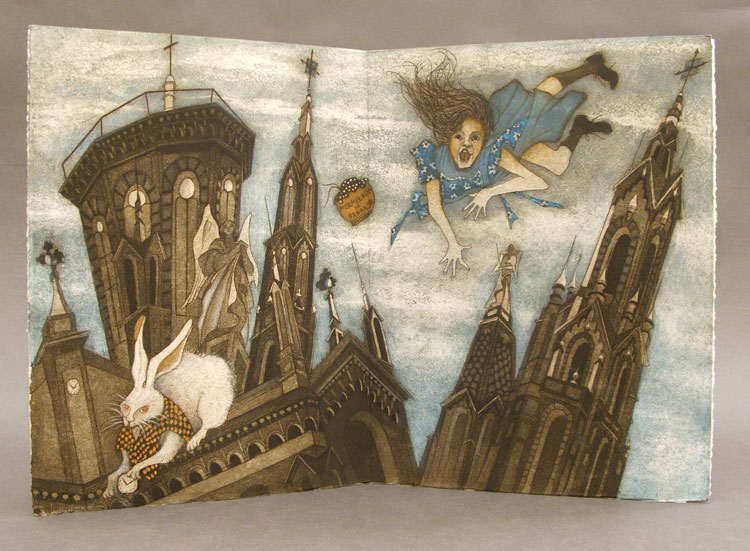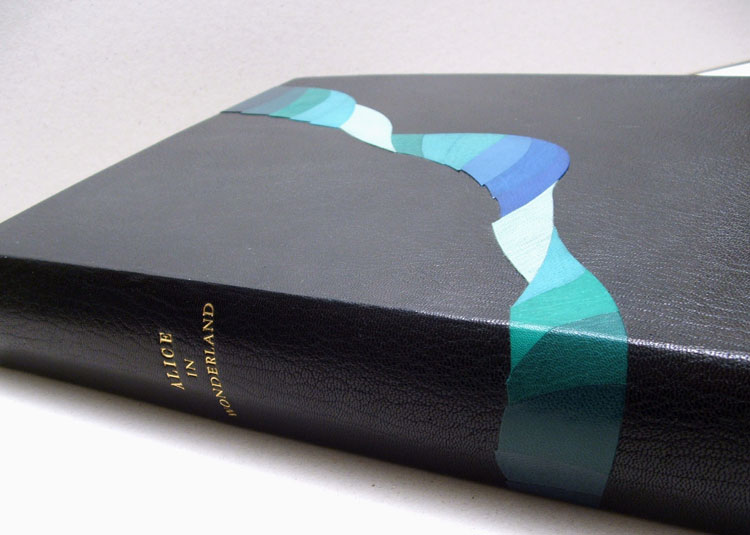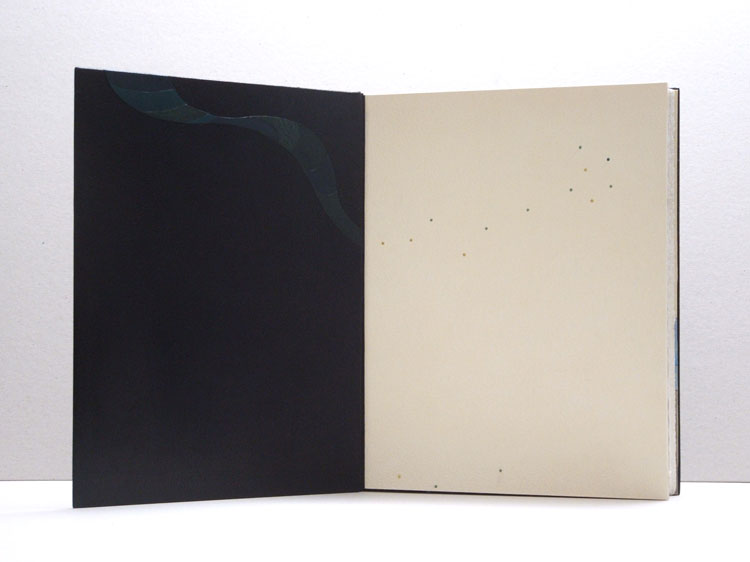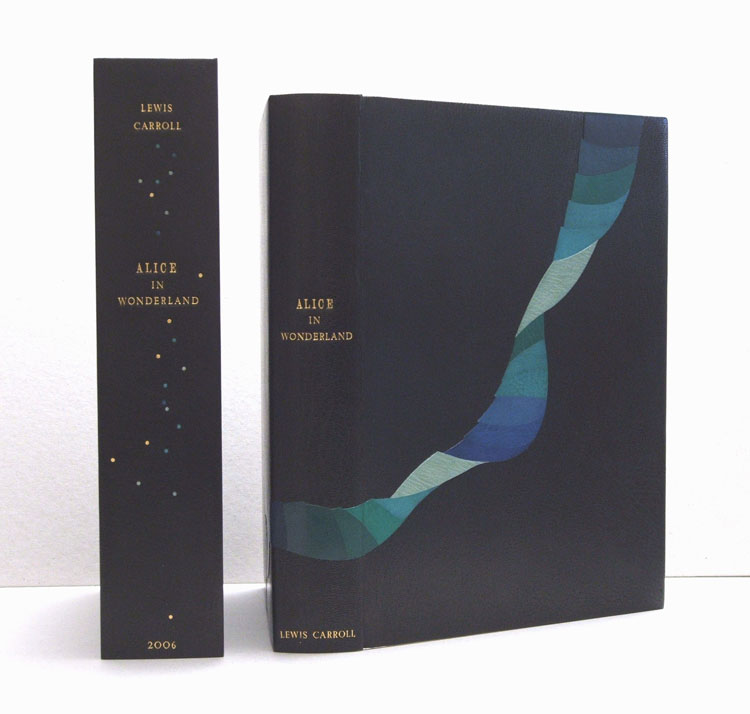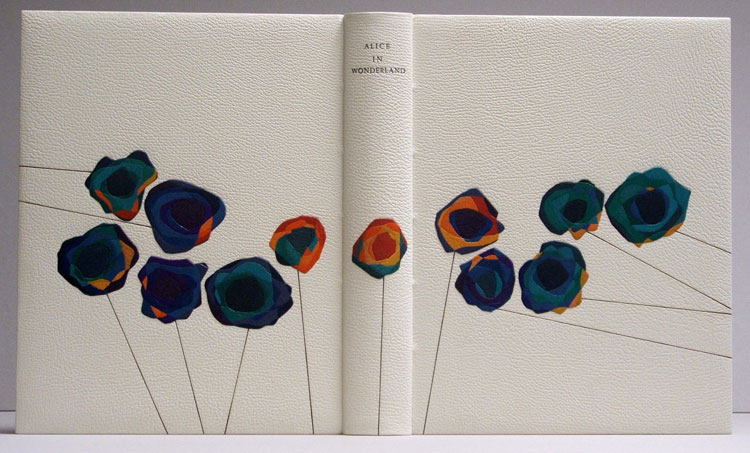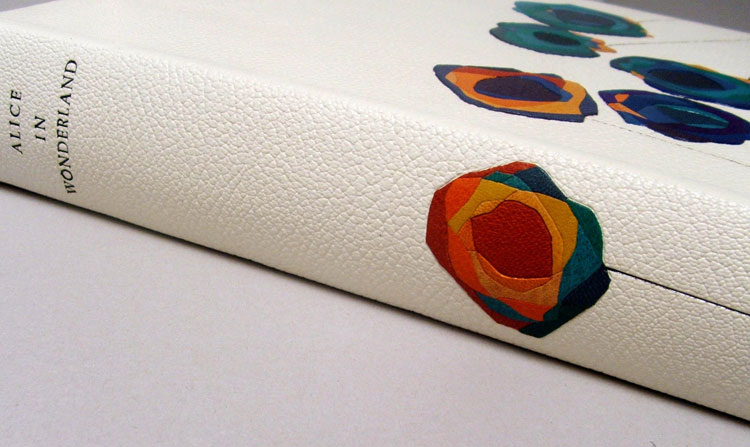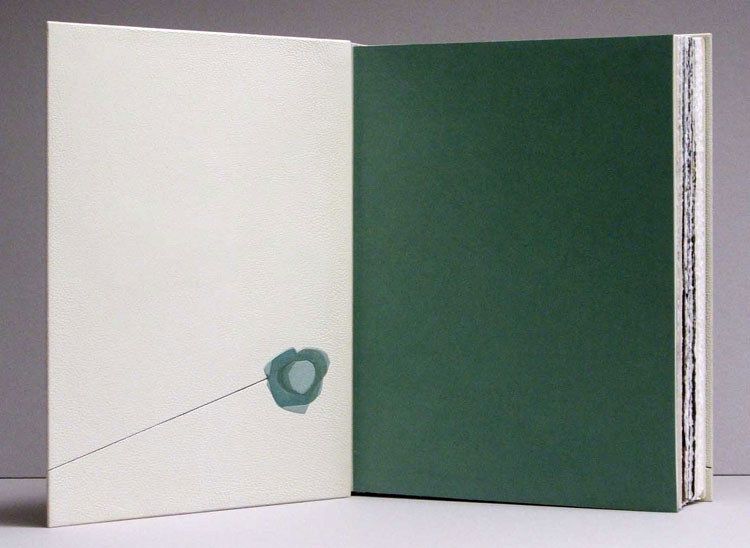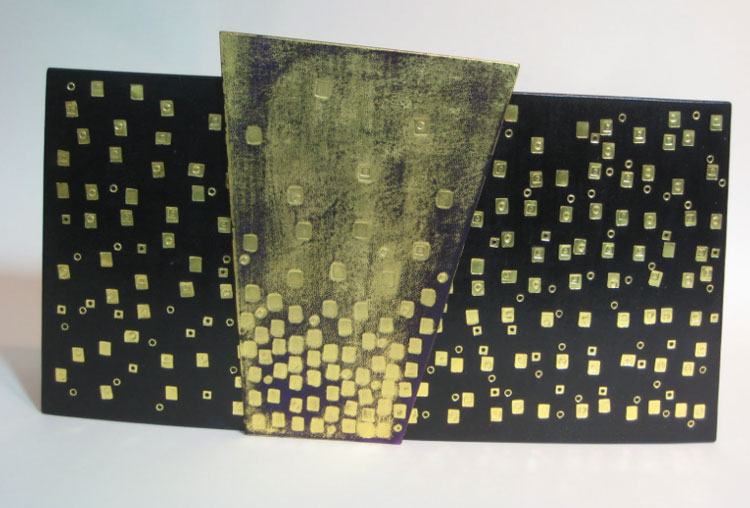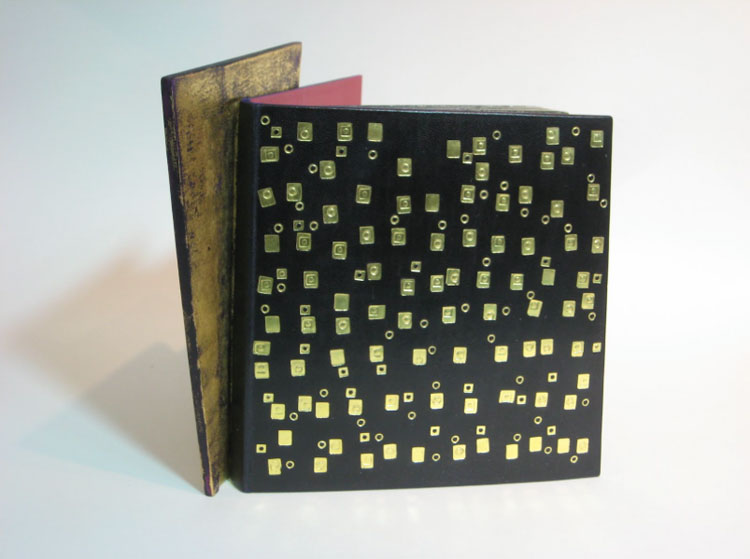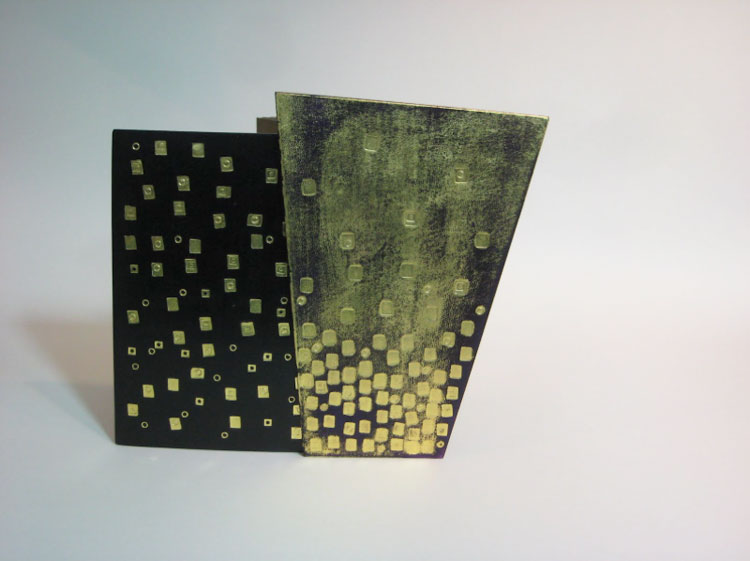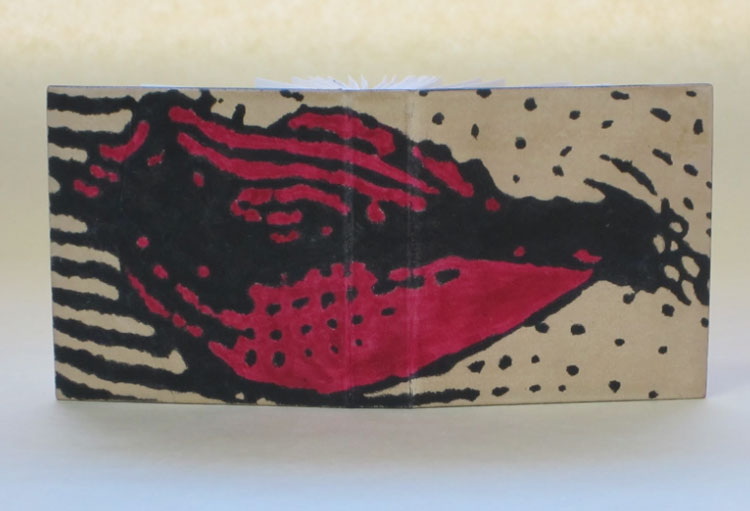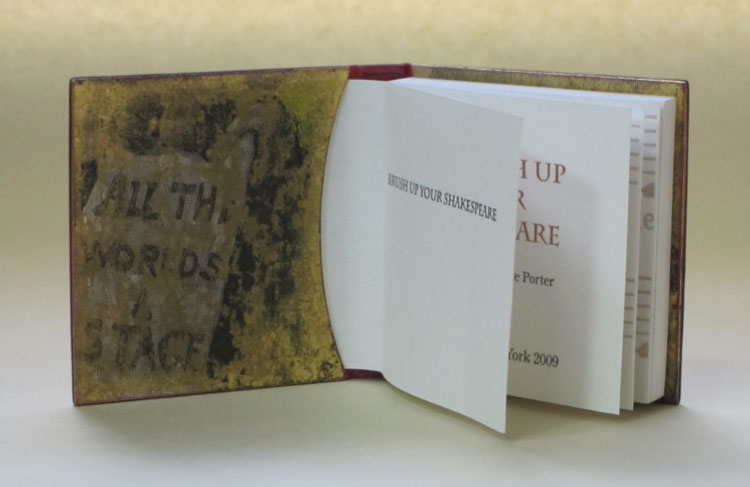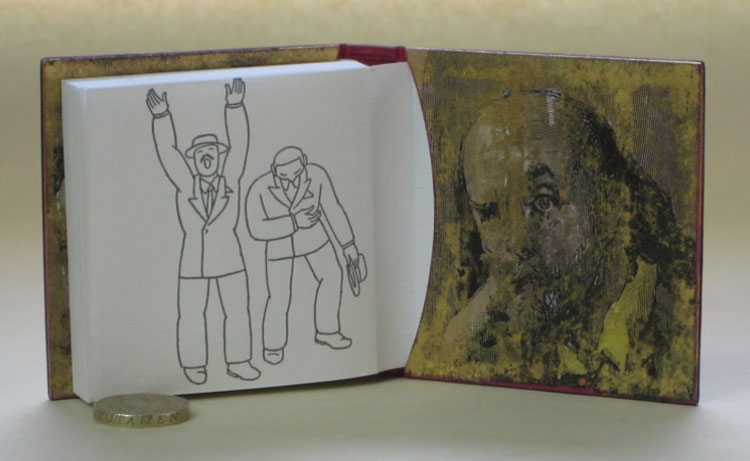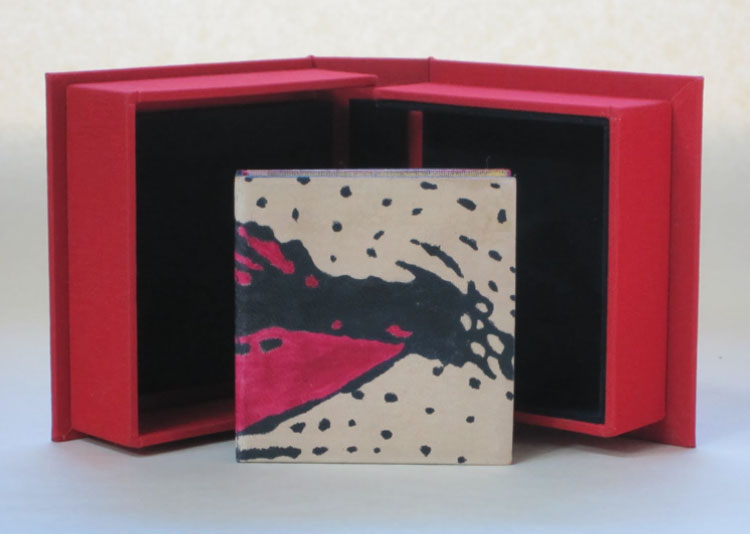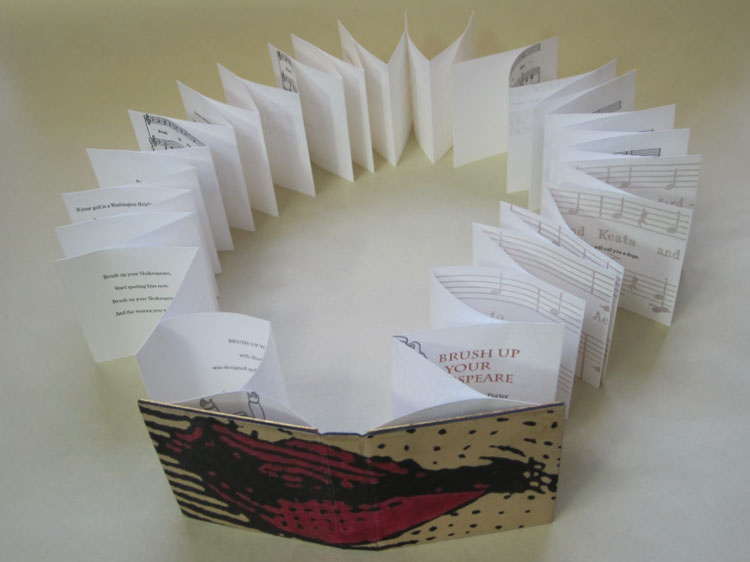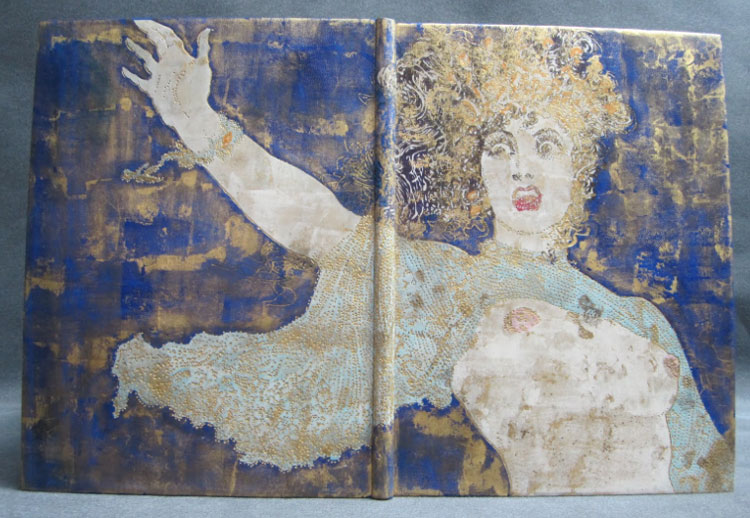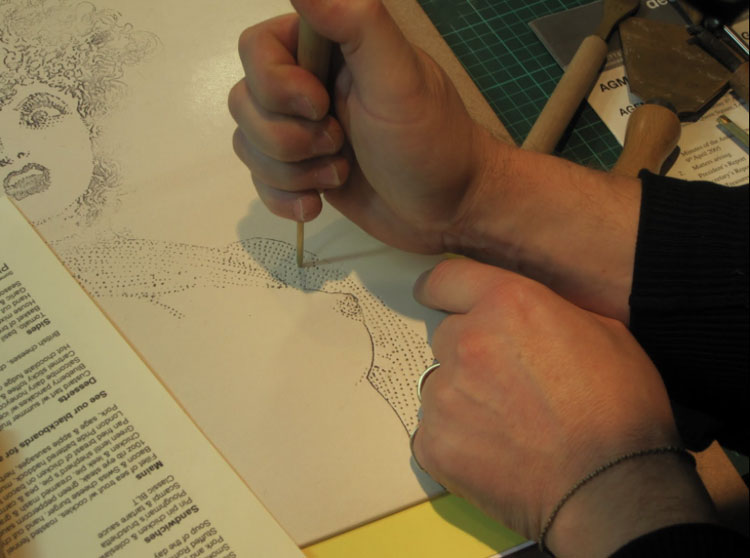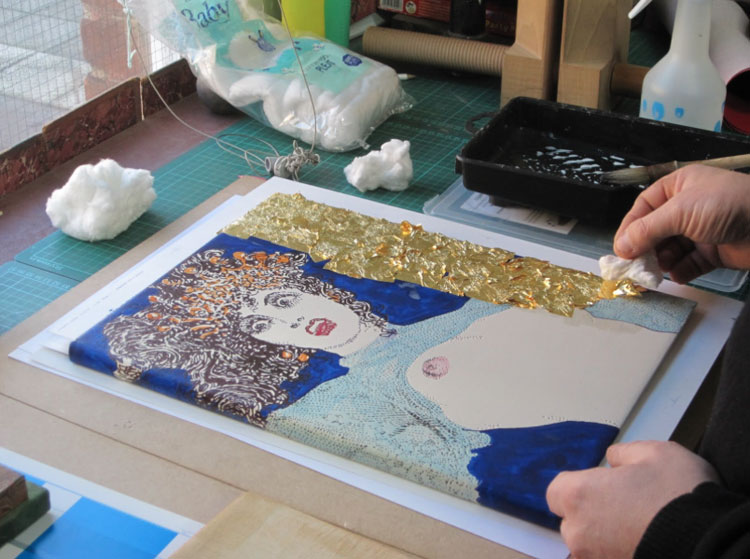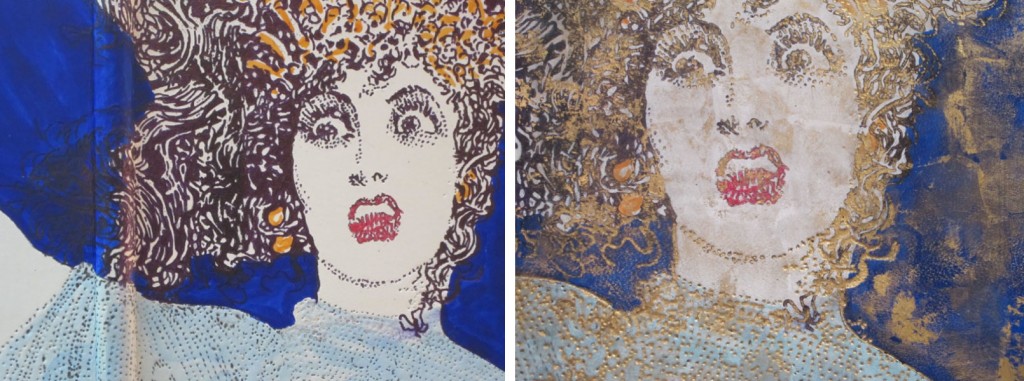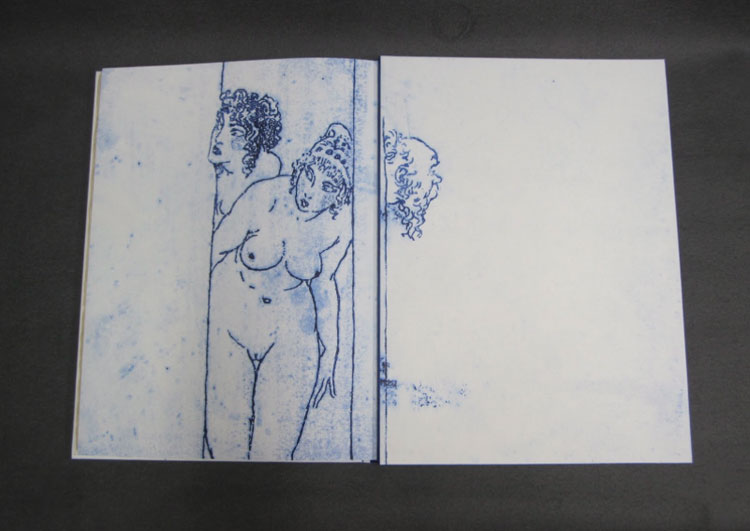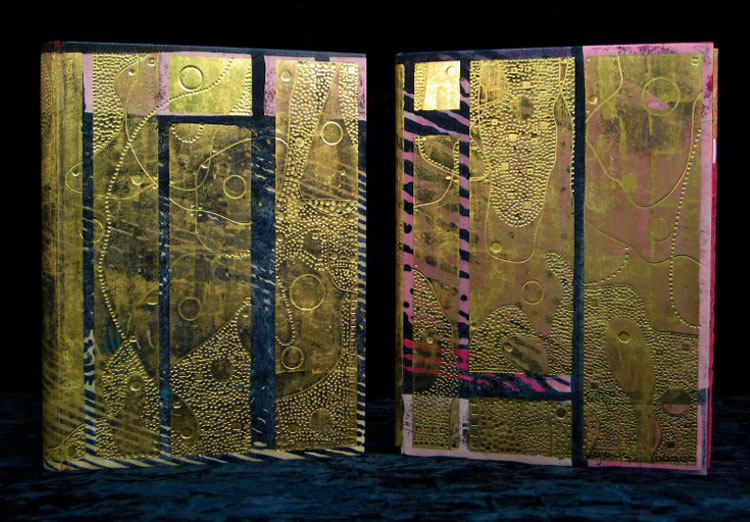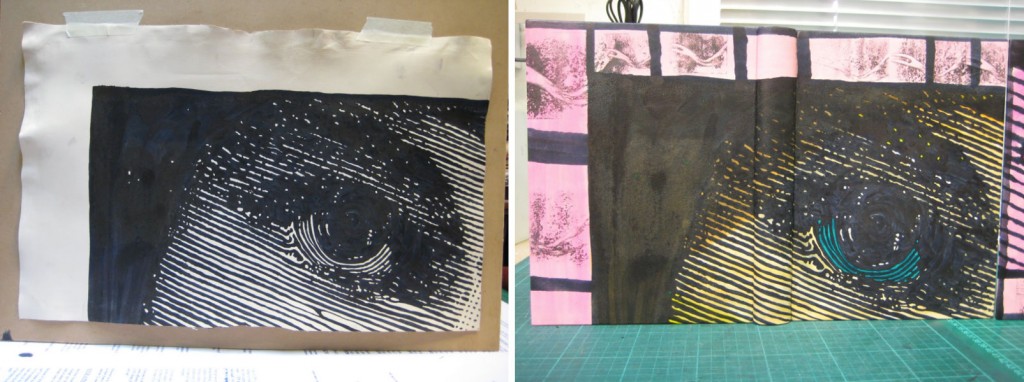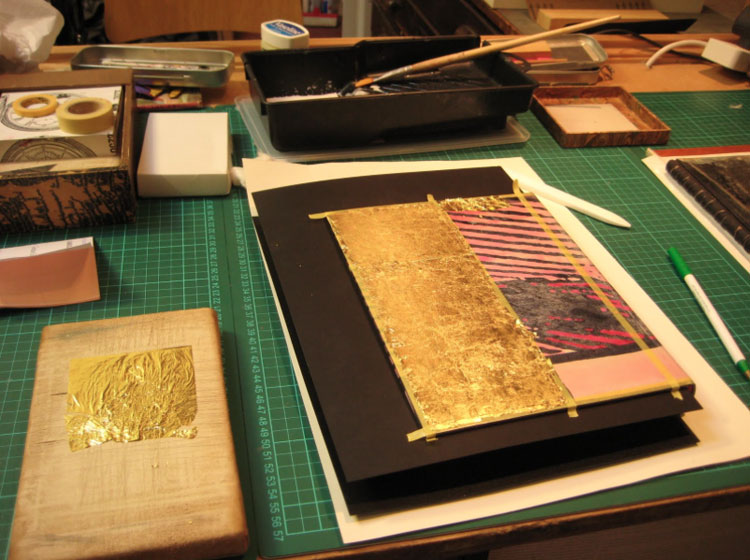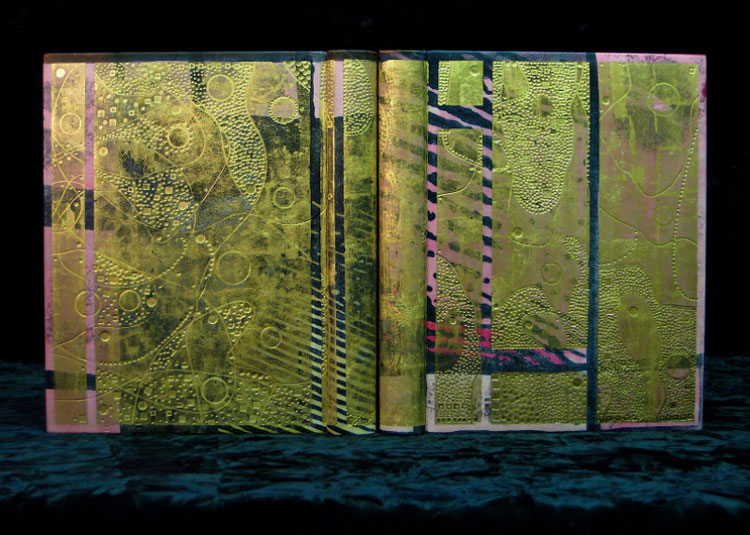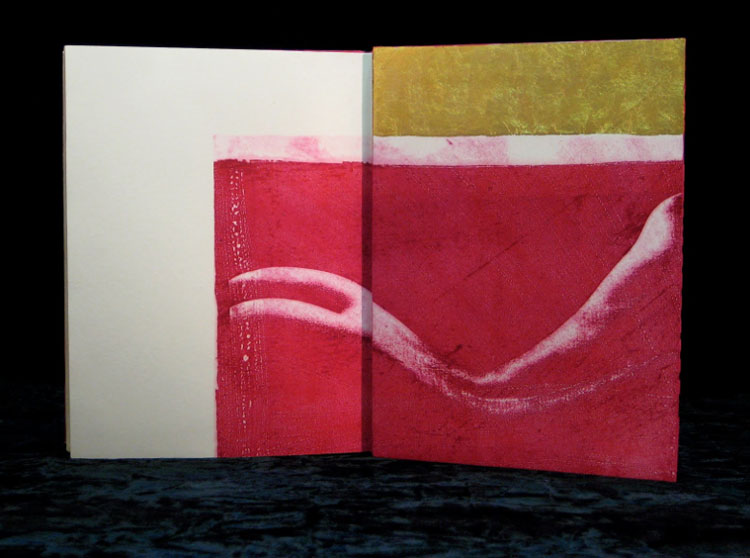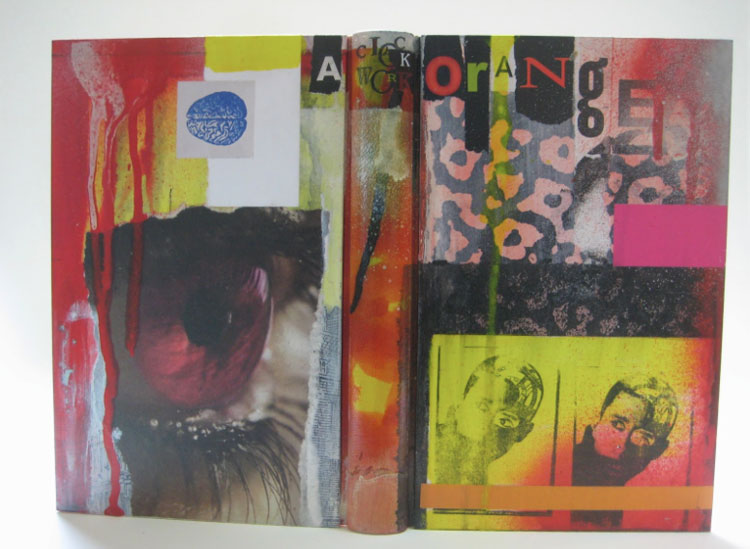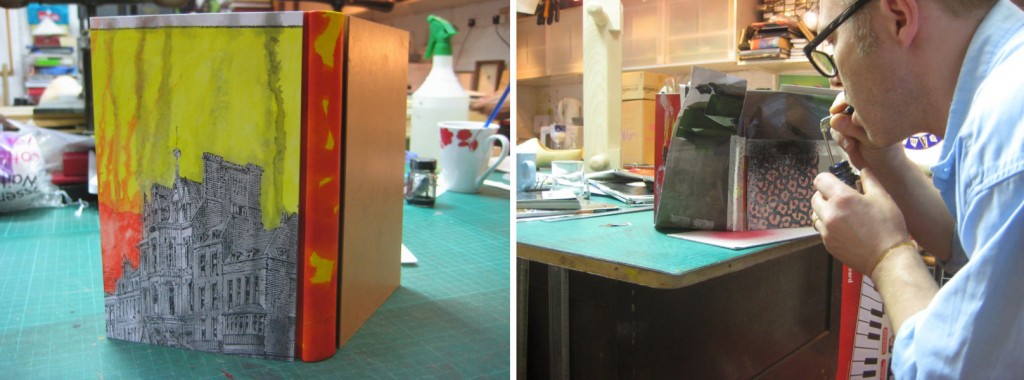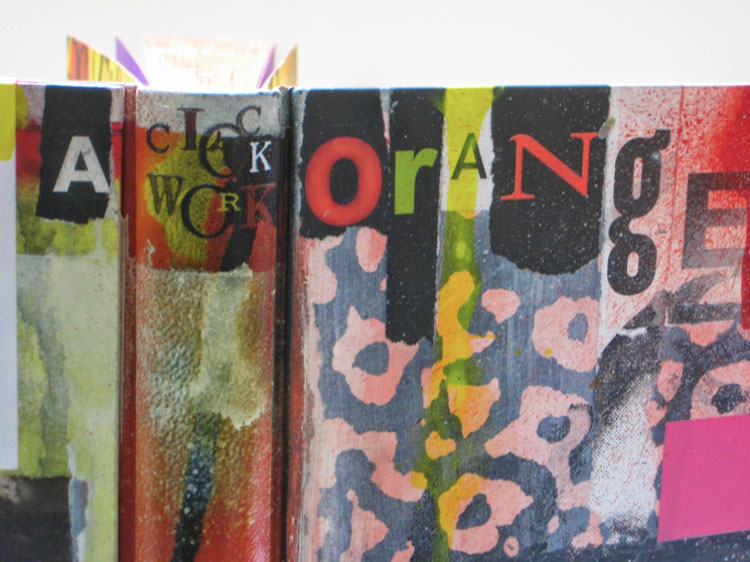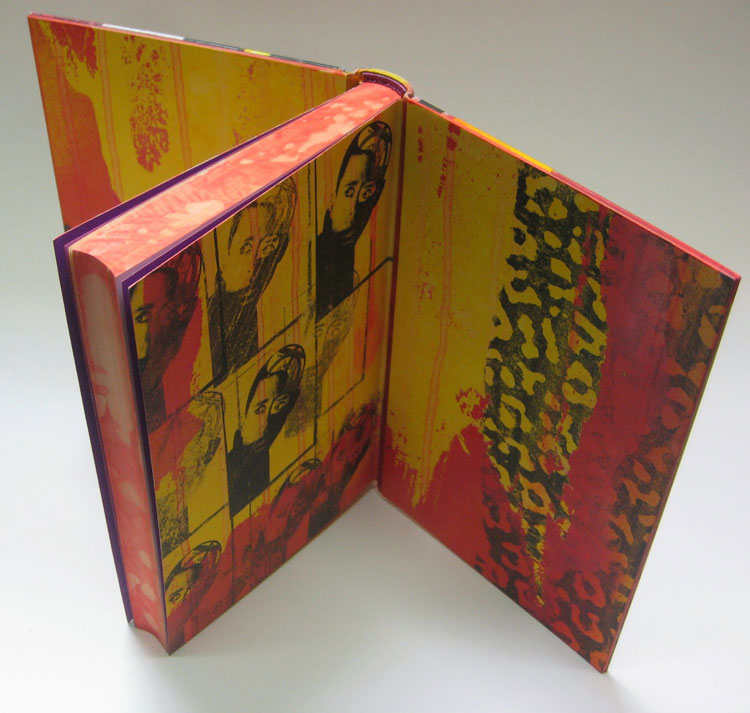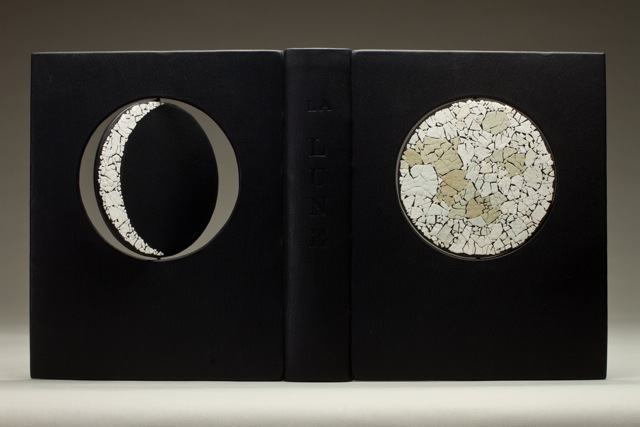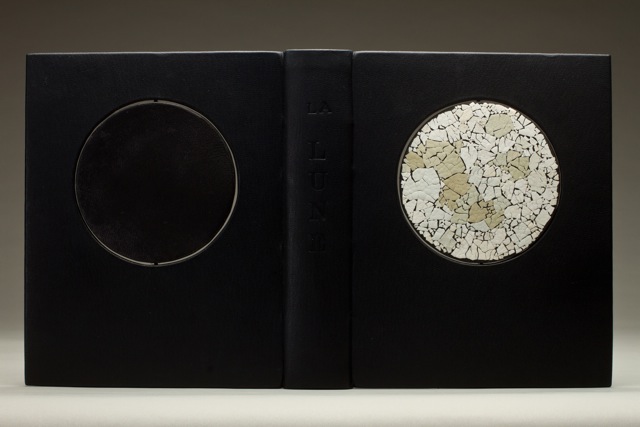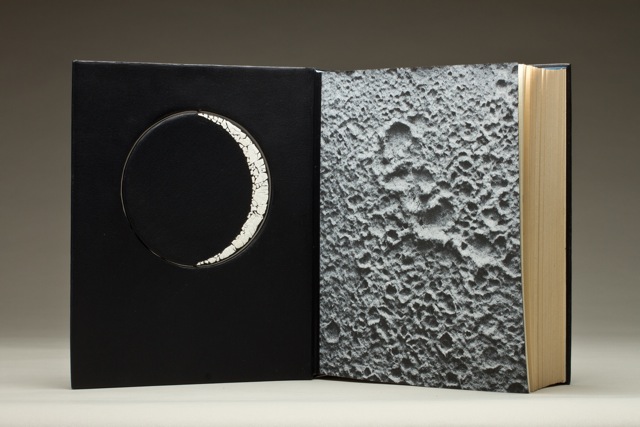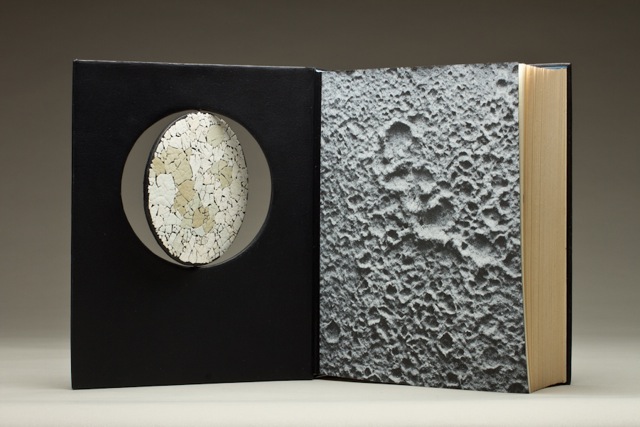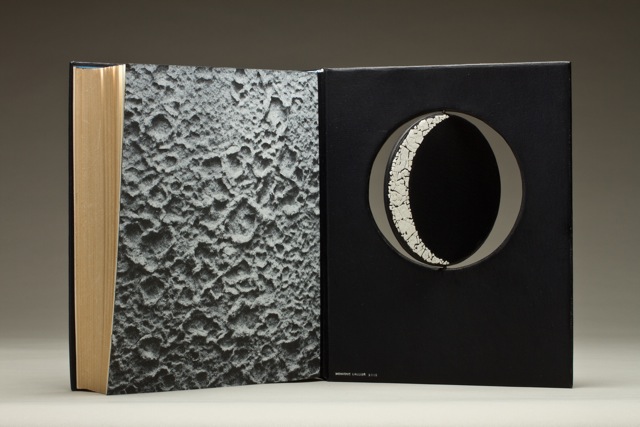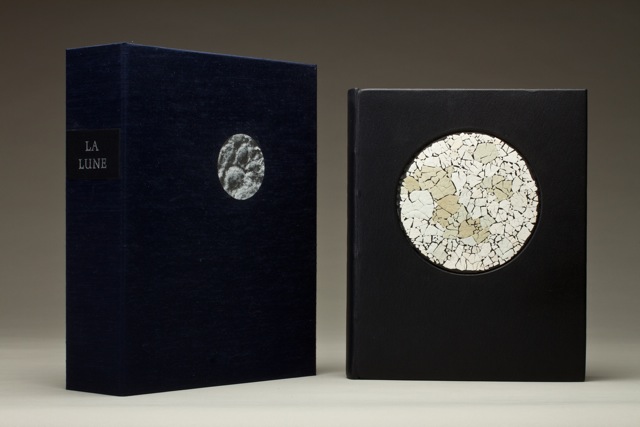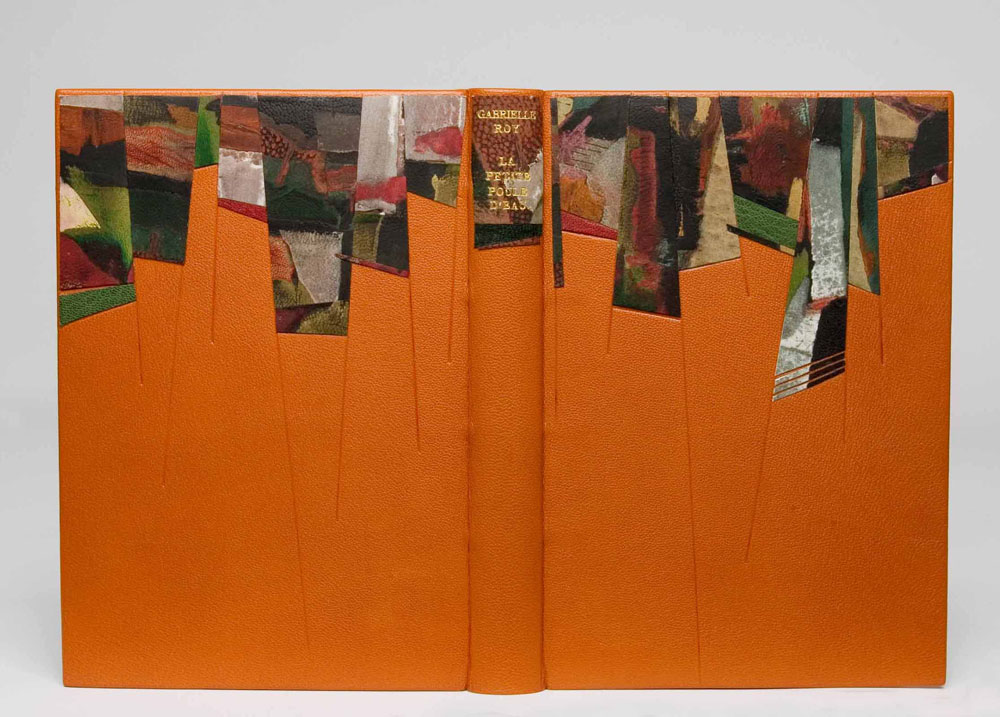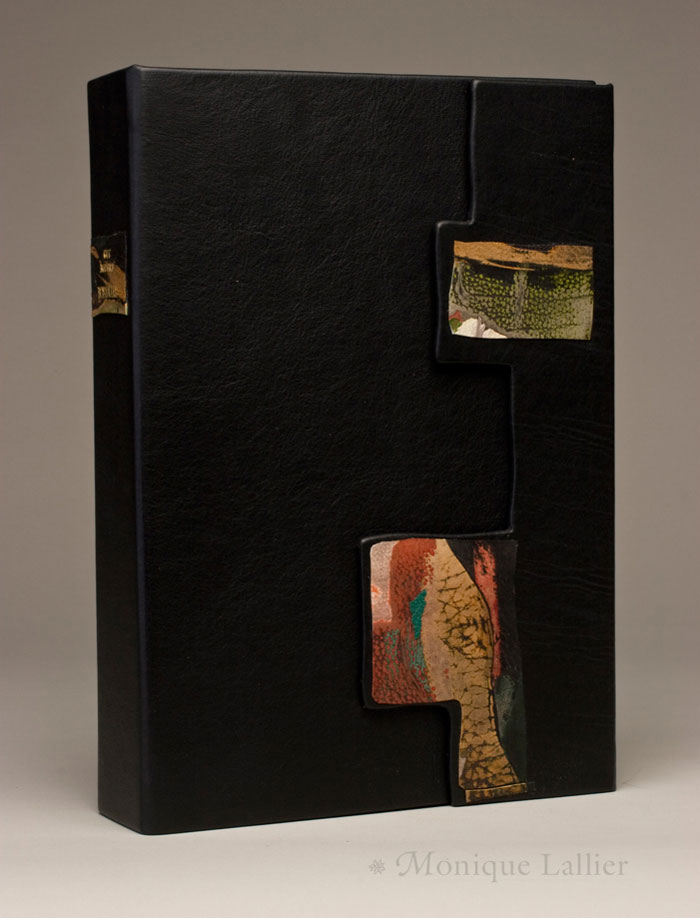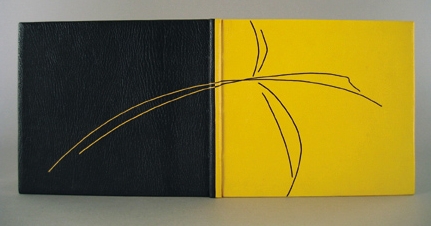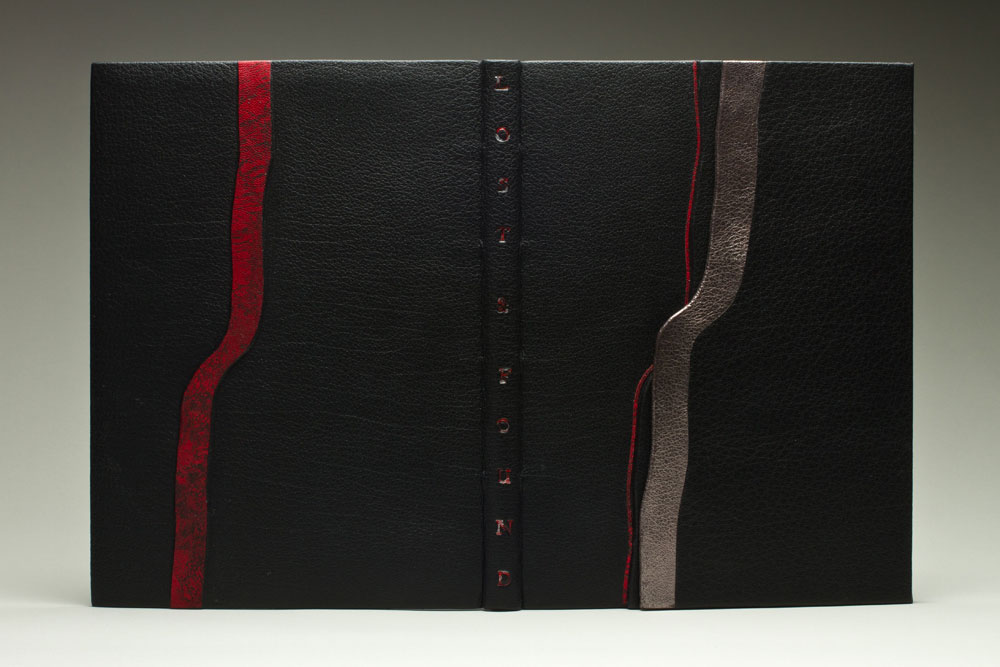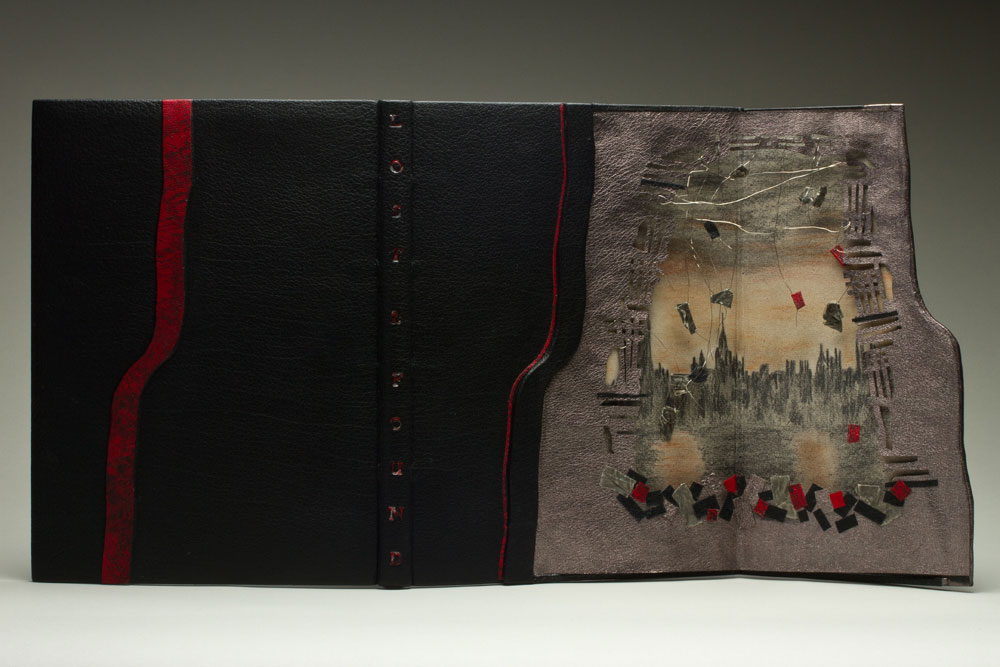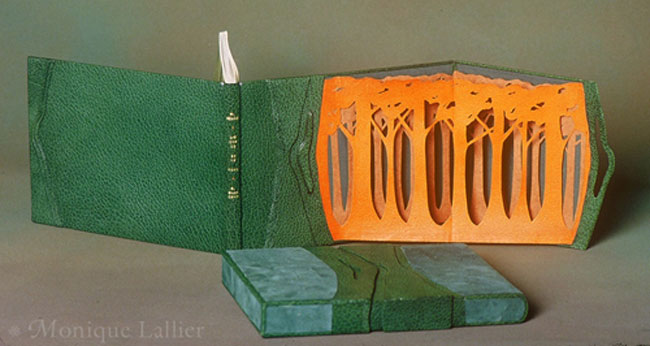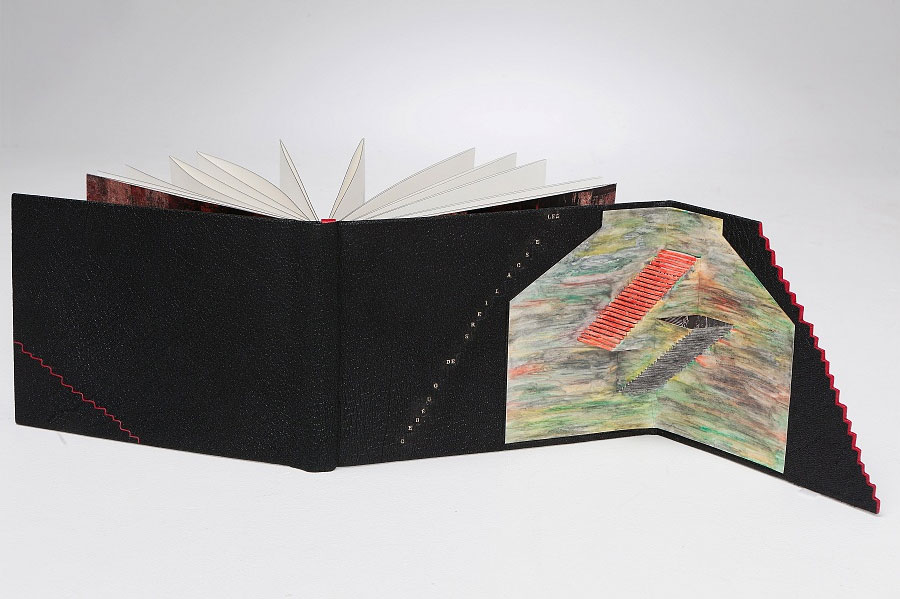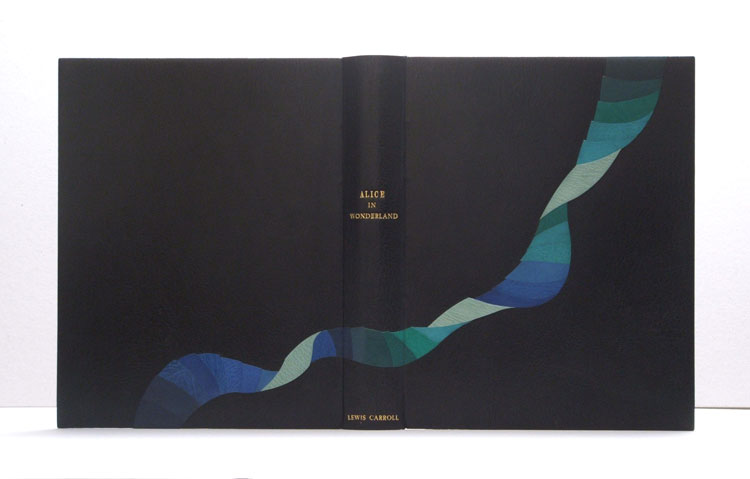 Sol Rébora has bound two copies of Alice in Wonderland. Both designs are stark opposites, one bound in full black goatskin and one bound in full white goatskin. The binding above was bound in 2006, with the design executed in a series of blue onlays and title tooled in gold.
Sol Rébora has bound two copies of Alice in Wonderland. Both designs are stark opposites, one bound in full black goatskin and one bound in full white goatskin. The binding above was bound in 2006, with the design executed in a series of blue onlays and title tooled in gold.
The design on Alice in Wonderland (black) is stunning, the blue onlays run so fluidly across the covers. Did you hand-dye the blue onlays for this binding? Can you discuss the concept behind the design?
I had read the book and the image of Alice falling along the stairs, plus the kind of dream that she led, gave me part of the idea for the design.
Also the special perspective of the illustrations helps me to spread this design across the covers.
I had used different colors of blue, but I didn’t dye them. The tone of a single skin of leather can change, depending on the section. I choose the piece I wanted depending on the tone and “direction” of the grain. Where the grain changes, the tone of the color changes; I can get different tones from the same skin of leather.
The elegant ribbon-like set of onlays continues onto both the front and back doublures. The flyleaves are inlayed with a series of dots that extend the flow of the onlays.
Sol’s response continues:
Now, you may see I had bound the same book with a total different design; this one is full white leather with big flowers, all across the cover. Those flowers are done with inlay techniques, full color using blue, green, orange and yellow.
I had done this design for the same book, same edition, with the same illustrations, but three years later and for a different client. (I didn’t have that wonderful white French leather in my hands when I bound the first Alice, and I didn’t have the beautiful Harmatan black leather when I bound the second Alice.)
I should say that, being in Buenos Aires, I also have to play with the leathers I have at the moment to make decisions on my designs.
– – – – – – – – – – – –
Bound in the French-style of fine binding in full white goatskin, this Alice in Wonderland (white) was completed in 2010. The mosaic-like flowers are created through layers of goatskin. The lines and title are smoke tooled.
I was introduced to the work of Sol Rébora through Pamela Train Leutz’s book The Thread That Binds. Her interview with Pamela was inspiring and led me to investigate her work further. Sol lives and works in Buenos Aires, Argentina. Up until now I’ve interview bookbinders from Canada, United States and England. I’m excited to present the point of a view from a bookbinder living in South America.
In order to become the talented bookbinder she is now, Sol had to look into study opportunities outside of Argentina in order to grow within her field. Read the interview after the jump to explore more about bookbinding in Argentina and how Sol became a bookbinder. Come back each Sunday in the month of November to see more work from Sol.
